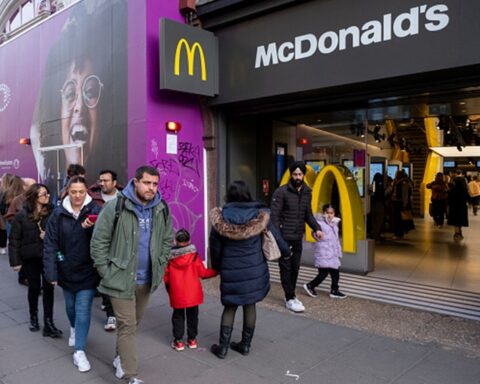New Delhi, October 30, 2023: Type 2 diabetes and high blood pressure (hypertension), which are two of the most common chronic illnesses in India, have been shown to be closely linked.
People who have type 2 diabetes are more likely to develop hypertension and have an elevated risk of experiencing a heart attack or stroke. They’re also more likely to have conditions that increase their risk of heart disease or stroke, such as high blood pressure and high cholesterol. Some facts that illustrate this link:
- If you have diabetes, you’re twice as likely to have hypertension (heart disease) or a stroke than someone who does not have diabetes, and to experience these at a younger age, according to the Centers for Disease Control and Prevention (CDC).
- Adults with diabetes are 2 to 4 times more likely to die from heart disease than adults who do not have the condition, notes Johns Hopkins Medicine.
- Among people age 65 and older who have diabetes, an estimated 68 percent die from some form of heart disease and 16 percent die of stroke, according to the American Stroke Association.
- Heart disease and stroke are the most common causes of death in adults with diabetes, according to the CDC.
Risk factors
Hypertension and type 2 diabetes share similar risk factors. These include:
- being overweight or having obesity
- having a sedentary lifestyle
- following an unhealthy diet
- experiencing chronic stress
- having poor sleep habits
- smoking tobacco
- being exposed to air pollution
Additional risk factors for hypertension include:
- a diet high in sodium
- low levels of potassium
- high alcohol consumption
Having a family history of hypertension increases the risk of hypertension, suggesting a role for both genetic and environmental factors. A close family history of diabetes also increases the risk of both type 1 and type 2 diabetes.
Having hypertension appears to increase the risk of type 2 diabetes, and having diabetes increases the risk of hypertension.
Managing type 2 diabetes with hypertension
This means that if you have type 2 diabetes with hypertension, managing your condition effectively means paying attention to your ABCDE.
Managing your ABCDE working to reduce diabetes and high blood pressure risk aren’t separate goals — they’re closely related. And with few exceptions, a healthy choice for your diabetes means a healthy choice for your heart, and vice versa.
Here are ABCDE to manage your diabetes and improve your heart health, and why experts believe they’re beneficial for both.
1. A stands for HbA1c
The hemoglobin A1c test tells you your average level of blood sugar over the past 2 to 3 months. It’s also called HbA1c. HbA1c below 5.7% is normal, between 5.7 and 6.4% indicates you have prediabetes, and 6.5% or higher indicates you have diabetes.
The target A1c level for people with diabetes is usually less than 6.5%. The higher the hemoglobin A1c, the higher your risk of having complications related to diabetes. Someone who has had untreated diabetes for a long time might have a level above 8%.
If you have diabetes and your level is above your target, your doctor may change your treatment plan to get your level down.
People with diabetes should have an A1c test every 3 months to make sure their blood sugar is in their target range. If your diabetes is under good control, you may be able to wait longer between the blood tests. But experts recommend checking at least two times a year.
2. B stands for Blood Pressure
Blood pressure is the force of your blood pushing against the walls of your arteries. Each time your heart beats, it pumps blood into the arteries. Your blood pressure is highest when your heart beats, pumping the blood. This is called systolic pressure. When your heart is at rest, between beats, your blood pressure falls. This is called diastolic pressure.
Your blood pressure reading uses these two numbers. Usually the systolic number comes before or above the diastolic number. For example, 120/80 means a systolic of 120 and a diastolic of 80.
High blood pressure usually has no symptoms. So the only way to find out if you have it is to get regular blood pressure checks from your health care provider. Your provider will use a gauge, a stethoscope or electronic sensor, and a blood pressure cuff. He or she will take two or more readings at separate appointments before making a diagnosis. A blood pressure checking machine, which is medically known as BP monitor, is present in every household these days making it easier for people to check their blood pressure at home.
- Normal blood pressure. Blood pressure is 120/80 mm Hg or lower.
- Elevated blood pressure. The top number ranges from 120 to 129 mm Hg and the bottom number is below, not above, 80 mm Hg.
- Stage 1 hypertension. The top number ranges from 130 to 139 mm Hg or the bottom number is between 80 and 89 mm Hg.
- Stage 2 hypertension. The top number is 140 mm Hg or higher or the bottom number is 90 mm Hg or higher.
Blood pressure higher than 180/120 mm Hg is considered a hypertensive emergency or crisis. Seek emergency medical help for anyone with these blood pressure numbers.
Untreated, high blood pressure increases the risk of heart attack, stroke and other serious health problems. It’s important to have your blood pressure checked at least every two years starting at age 18. Some people need more-frequent checks.
3. C stands for Cholesterol
Cholesterol is a waxy, fat-like substance that’s found in all the cells in your body. Your body needs some cholesterol to make hormones, vitamin D, and substances that help you digest foods. Your body makes all the cholesterol it needs. Cholesterol is also found in foods from animal sources, such as egg yolks, meat, and cheese.
If you have too much cholesterol in your blood, it can combine with other substances in the blood to form plaque. Plaque sticks to the walls of your arteries. This buildup of plaque is known as atherosclerosis. It can lead to coronary artery disease, where your coronary arteries become narrow or even blocked.
What are HDL, LDL, and VLDL?
HDL, LDL, and VLDL are lipoproteins. They are a combination of fat (lipid) and protein. The lipids need to be attached to the proteins so they can move through the blood. Different types of lipoproteins have different purposes:
HDL stands for high-density lipoprotein. It is sometimes called “good” cholesterol because it carries cholesterol from other parts of your body back to your liver. Your liver then removes the cholesterol from your body. It levels should be above 40 mg/dL.
LDL stands for low-density lipoprotein. It is sometimes called “bad” cholesterol because a high LDL level leads to the buildup of plaque in your arteries. It levels should not be above 100 mg/dL.
VLDL stands for very low-density lipoprotein. Some people also call VLDL a “bad” cholesterol because it too contributes to the buildup of plaque in your arteries. But VLDL and LDL are different; VLDL mainly carries triglycerides and LDL mainly carries cholesterol. VLDL levels are not directly measured during a blood test. VLDL levels are calculated based on the amount of triglycerides in your blood. Your VLDL is calculated as 20% of your triglyceride levels.
A normal triglyceride level is less than 150 mg/dL. Consequently, 30 mg/dL is the maximum healthy level of VLDL. A normal VLDL range is between 2 and 30 mg/dL
Triglycerides: This is a type of fat. You need some triglycerides. But high levels (hypertriglyceridemia) can put you at risk for atherosclerosis and other diseases. Normal – Less than 150 mg/dL, Mildly increased – 150 to 499 mg/dL, Moderately increased – 500 to 886 mg/dL and Very high – Greater than 886 mg/dL.
Total cholesterol — A high total cholesterol level can increase your risk of cardiovascular disease. However, decisions about when to treat high cholesterol are usually based upon the level of LDL or HDL cholesterol rather than the level of total cholesterol. Studies suggest that the total cholesterol to HDL ratio is a better marker of the risk of heart disease than LDL cholesterol levels alone. In general:
A total cholesterol level of less than 200 mg/dL is normal.
A total cholesterol level of 200 to 239 mg/dL is borderline high.
A total cholesterol level of 240 mg/dL or greater is high.
The total cholesterol level can be measured any time of day. It is not necessary to fast (ie, avoid eating) before testing.
- Ratio between total cholesterol and HDL: This is your total cholesterol divided by your HDL. In general, you want your number to be below five. Your results may show a chart with more details and desirable levels.
4. D stands for Diet
Eating to manage diabetes and high blood pressure is not a one-size-fits-all approach. In general, though, meal plans that focus on the quality and quantity of carbohydrates can help you manage your blood sugar levels.14
Carbohydrates affect blood sugar levels. When carbs are metabolized, they turn into glucose. Fiber-rich carbohydrates like whole grains, non-starchy vegetables, and legumes can help reduce blood glucose changes. They can also provide vitamins, minerals, and antioxidants and increase feelings of fullness.
If you have high blood pressure, limiting your sodium intake can also help you keep your blood pressure in check. This is especially true if you are salt sensitive.
People with high blood pressure might benefit from the Dietary Approaches to Stop Hypertension (DASH) diet The DASH eating plan limits saturated and trans fat, sugar, and sodium and features plenty of:
- Fruits
- Vegetables
- Whole grains
- Fresh and dried herbs
- Unsalted nuts and seeds
- Legumes
- Lean protein
A good rule is to eat two to three cups of non-starchy vegetables daily or to make half your plate non-starchy vegetables at each meal.
5. E stands for Exercise
Exercise helps manage blood glucose levels and high blood pressure by:
- Strengthening your heart
- Helping you reach and maintain a healthy weight
- Utilizing glucose by increasing insulin sensitivity
When your muscles contract, your cells can use glucose for energy. Studies have shown that regular exercise can reduce your HbA1c. A minimum of 150 minutes of moderate-intensity aerobic exercise each week or 75 minutes of vigorous-intensity exercise each week. Moderate exercise includes brisk walking and swimming. People should also consider doing muscle strengthening exercises.
The following other lifestyle factors are alsp crucial for managing both blood glucose levels and blood pressure.
Weight Management
Modest weight loss has been shown to significantly improve blood sugar levels. Losing weight has many benefits for people with diabetes, including:
- Improves insulin sensitivity
- Reduces inflammation
- Improves vascular health
Weight loss can also help lower blood pressure by reducing the stress placed on the heart.
Studies have shown that losing about 10% of your body weight can improve blood sugar and reduce the need for medication. In some cases, weight loss can even put diabetes into remission.
Quit Smoking
If you smoke and have diabetes, high blood pressure, or both, get the help you need to quit. Quitting can significantly improve your health and make it easier to manage your conditions.
Smoking makes it harder to control diabetes because it:
- Increases inflammation
- Raises your bad cholesterol
- Raises your blood pressure
- Reduces the amount of oxygen supplied to your organs
Over time, quitting can also lower the risk of further blood vessel damage.
Limiting alcohol consumption
High consumption of alcohol can increase the riskTrusted Source of the following:
- excess calorie intake
- weight gain and diabetes
- thickening of the artery walls
- raised blood pressure
The AHA recommends a maximum of one alcoholic drink per day for females and two alcoholic drinks per day for males. One drink equates to one 120 ml glass of wine.
People may wish to speak with their doctor about how much alcohol is safe for them to consume.
Medication
In addition to lifestyle measures, a doctor may prescribe medications to help manage diabetes and hypertension.
People with type 1 diabetes need to take insulin daily. Those with type 2 diabetes may need to take oral diabetes medications and/or non-insulin injectables such as Metformin and Linagliptin . They may also take insulin.
There are several classes of medications that help people with hypertension to control their blood pressure. These include:
- Angiotensin-converting enzyme (ACE) inhibitors: ACE inhibitors reduce production of the hormone “angiotensin.” This allows the blood vessels to relax and dilate, thereby lowering blood pressure.
- Angiotensin II receptor blockers: These medications block the effects of angiotensin, which is a chemical that causes the arteries to narrow. Without angiotensin, the blood vessels remain open, thereby reducing blood pressure.
- Beta-blockers:These medications cause the following effects on the heart, which help to lower blood pressure:
- reducing heart rate
- reducing the heart’s workload
- reducing the heart’s output of blood
- Calcium channel blockers: Calcium causes the smooth muscles of the heart and arteries to contract. Calcium channel blockers prevent this action, resulting in less forceful heart contractions and a relaxation of the blood vessels. Both result in a reduction in blood pressure.
- Diuretics: These medications help the body remove excess sodium and water, which reduces blood volume and helps manage blood pressure.
- Vasodilators: These are medications that cause the muscular walls of the blood vessels to relax and dilate. This allows blood to flow through more easily, thereby reducing blood pressure.





